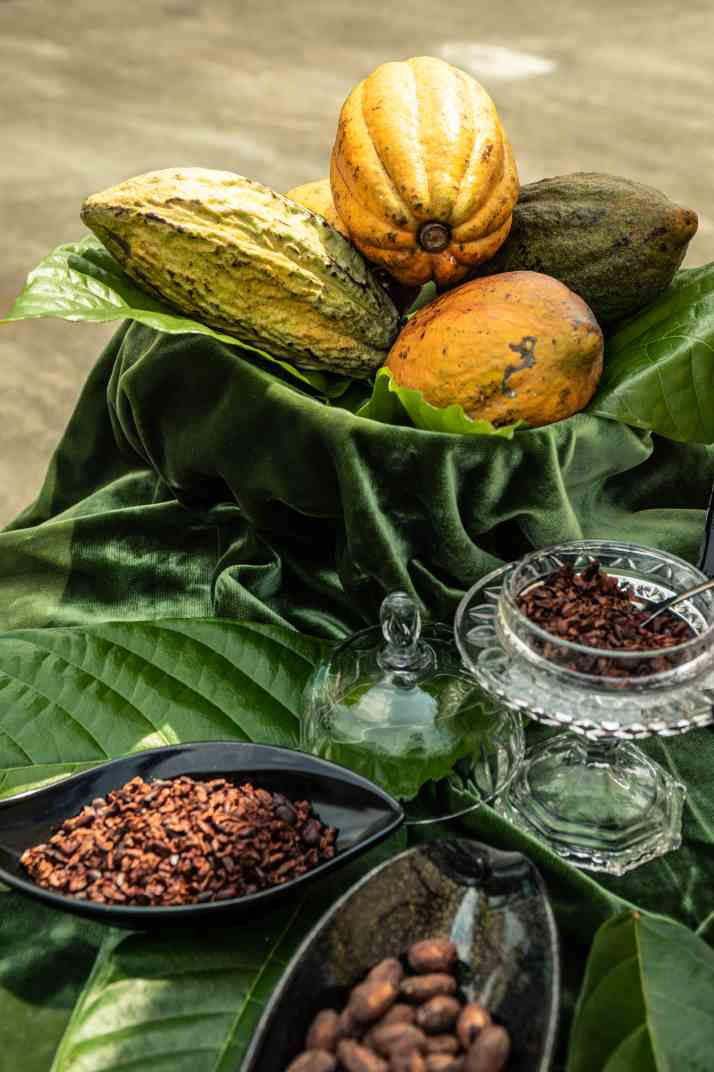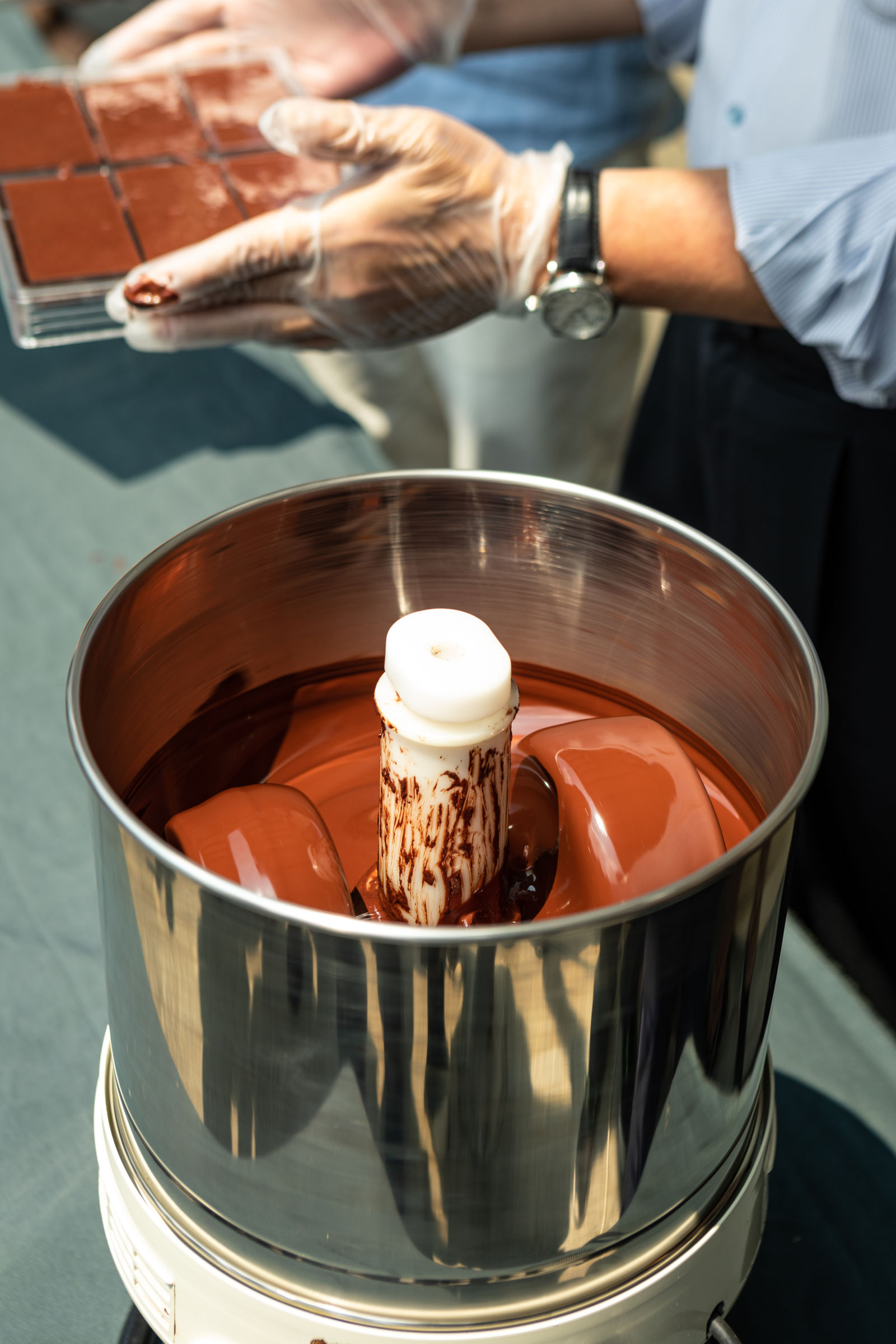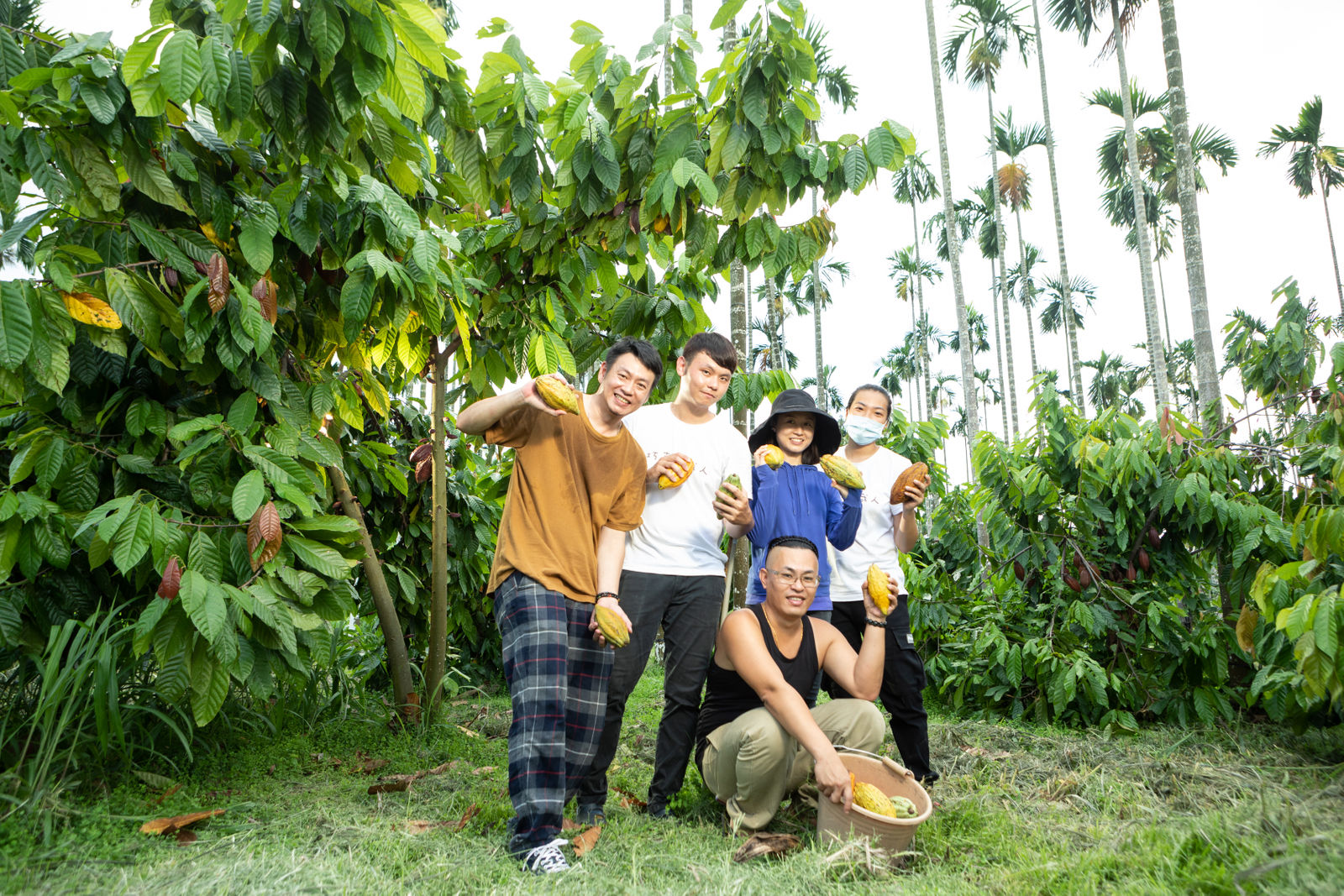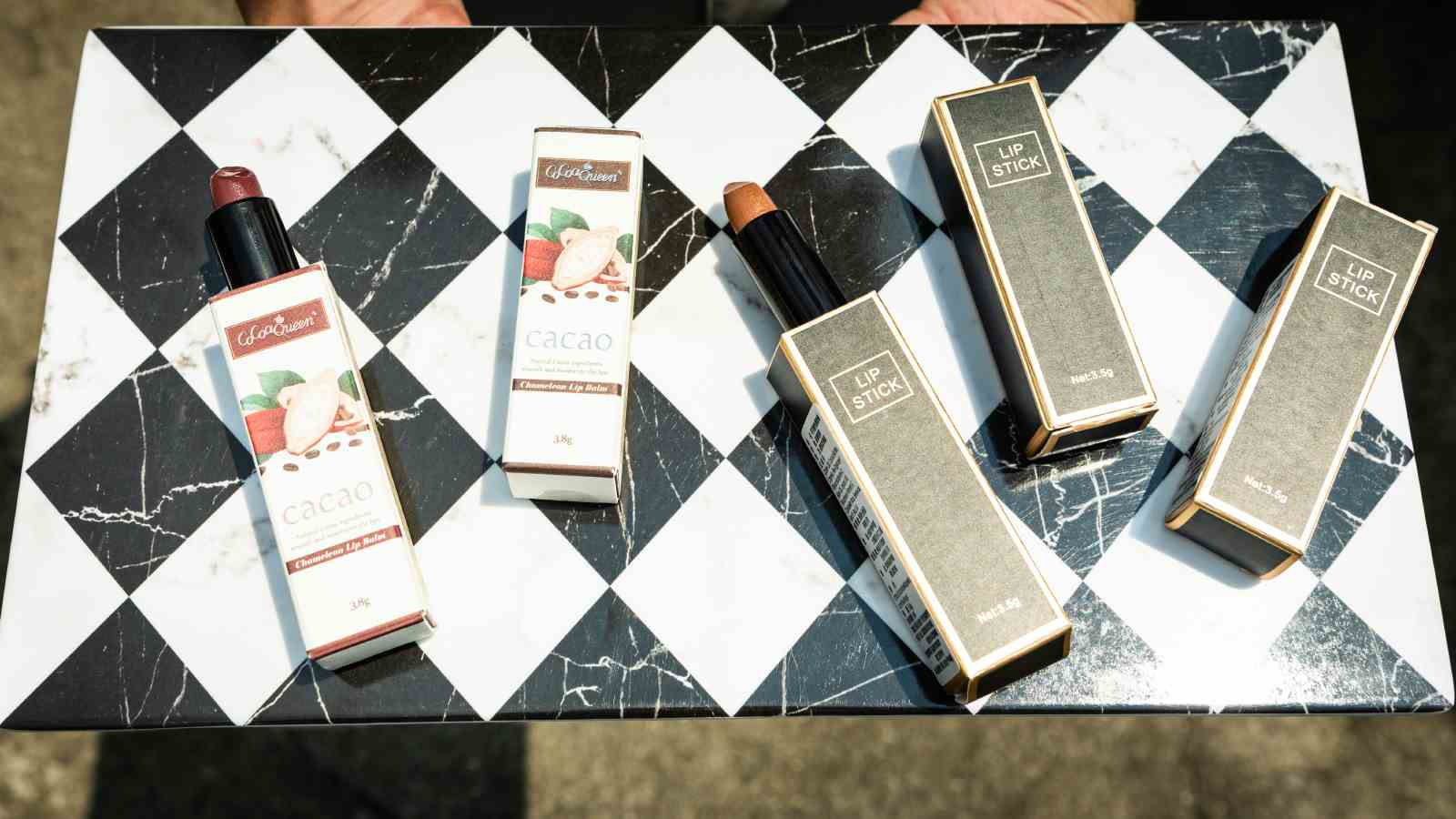How Pingtung Cacao Won the Chocolate Olympics

Source:Zhouqi Wu
Faced with an existential crisis, the poor southern Taiwan county of Pingtung transformed its agricultural sector. How did they put Taiwan chocolate on the world stage?
Views
How Pingtung Cacao Won the Chocolate Olympics
By Li Hsun TsaiFrom CommonWealth Magazine (vol. 707 )
As the car approached Neipu Township of Pingtung County, the view was full of tall, narrow betel palms. More than two decades ago, these trees made a fortune for Neipu and the surrounding area. Their annual worth totalled NT$9 billion.
But most Taiwanese were eventually weaned off of betel nuts. Not to mention the fact that the shallow-rooted palms were bad for soil and water conservation. Public opinion turned against these money trees. The farmerfolk had to look for something else to plant.
In 2003, Chiu Ming-sung (邱銘松), a native son who had planted betel in Neipu for thirty years, took a chance and planted cacao. It was the first cacao to sink roots into Pingtung since the Japanese occupation. Chiu planted the seeds for Choose Chius Chocolate (邱氏咖啡巧克力), and he went on to sell cacao seedlings to other farmers. Thus began the cacao industry of Pingtung.

(Source: Zhouqi Wu)
The Birth of 35 Chocolate Brands
The temperature fluctuation between day and night in Pingtung is small, making the region suitable for cacao cultivation. Early in its lifecycle, cacao needs to be protected from the sun. The ten-meter-tall betel palms are perfect for shading young cacao. But unlike the betel nut, the cacao plant has deep roots. It’s good for soil and water retention, so many farmers hopped onto the bandwagon.
After more than a decade, Pingtung has 300 hectares of cacao plants. Thirty-five chocolate brands have been born of them, and many have gone on to win international awards. Unlike some foreign chocolate brands that replace cacao butter with substitutes during the production process, Pingtung chocolate is made with the original cacao butter, which gives the candy a smoother texture.
Producing locally also reduces the chance of the cacao getting damp during transportation, which in turn makes it unnecessary to roast the beans at high temperatures. A natural sour taste is retained as the result, and so the flavor of Pingtung’s chocolates is highly commended by connoisseurs.
The International Chocolate Awards (ICA) is also known as the “Chocolate Olympics”. At the finals held in Guatemala last year, Judging Director Martin Christy told hundreds of chocolate experts from around the world, “You all need to watch out: Taiwan chocolate is on a roll!”
That evening, Pingtung won ‘best in competition’ in the plain/origin dark bar categories.
“Taiwan’s brand has been recognized by the world,” says Li-Ping Chen (陳麗萍), Director-General of the Pingtung County Department of Hakka Affairs, who helped nurture the cacao industry.
From having nothing to sitting pretty on top of the world; from individual farmers to a robust industry, the birth of Pingtung’s cacao business has not been an easy process.
A cacao tree can take two and a half to three years from planting the seeds to reaping the fruit. Even after harvest, the cocoa beans must undergo at least ten different steps, including fermentation, drying, and roasting, before it can be made into the delicious chocolate we know.
“There are many variables in these ten steps. Should there be any mistake, you lose the unique flavor of the dark chocolate, and you lose your market,” says Chen.
Fermentation is the key. But pioneering Taiwanese cacao farmers lacked the know-how. They had to forge their own way, which they did with the aid of books and videos on the subject.
“We must’ve thrown away a couple hundred kilograms of chocolate along the way,” says 33-year-old Chiu Chun-yu (邱濬宇), founder of Taiwan Choco (TC巧舖). After two years, he finally discovered the perfect temperature, moisture, and duration for fermenting cocoa.
Like many Hakka in Neipu, Chiu’s family home had a large betel nut plot.
His father supported the family by leasing banquet furniture. Eleven years ago, they threw themselves into the production of cocoa. They became Taiwan’s first “Agricultural Production and Marketing Group” (產銷班) for cocoa.
Taiwan Choco’s chocolate won silver at the Academy of Chocolate (AOC) awards last year. The year before, they took the gold at the ICA Asia-Pacific Competition. Two for two is a solid record.

(Source: Zhouqi Wu)
A Brand Born from a Blunder
Chiu studied catering in university. After completing his mandatory military service, he returned home to help his father with the family business, and to plant cacao. Six years ago, he established his brand. However, he would be the first to say it all happened by chance.
Originally, he worked with a chocolate chef who bought beans from him. After two months, the chef increased his order. To help his customer, Chiu negotiated with neighbors and bought the cocoa yield of roughly ten hectares, thus establishing an Agricultural Production and Marketing Group. But the chef only bought from him two more times before walking out of his life forever.
But Chiu could not let his group down. He continued to purchase cocoa, and he invented his own brand. He dabbled in chocolate production just to use up the massive inventory of beans.
Because Pingtung’s cacao plantations are mostly located in Hakka townships, and because the local Department of Agriculture needed the support, beginning in 2013, the Pingtung County Department of Hakka Affairs opened courses such as chocolate production, farmland management, and chocolate tasting.
When the current magistrate Pan Men-an took office, he listed cocoa as one of the key agricultural products. “Actions speak louder than words. We not only advised the farmers to plant cacao, we formulated a plan to build the industry,” stresses Feng-Lan Yin (鄞鳳蘭), Director of the Information and International Affairs Department in Pingtung County.
Starting in 2015, the County Government worked with organizations such as the local Youth College and Agriculture College to offer guidance programs. Chiu enrolled in the first class. When the second class started two years later, around 42% of the trainees were under forty.
At the same time, thanks to the Ministry of Education’s University Social Responsibility (USR) program (大學社會責任實踐計劃), local colleges worked with farmers during different stages of chocolate production. From evaluating seedling quality, fermenting cocoa, to developing value-added products and marketing the goods, cacao farmers had plenty of helping hands.
As resources poured in, cacao farms also expanded exponentially. But labor is expensive in Taiwan. Cocoa production could never hope to match foreign sources. In terms of the cost of raw materials, the market price in Taiwan was at least three times more expensive than most chocolate producing countries.
With no cost advantage, Pingtung’s chocolate desperately needed to find a unique market position in the hotly contested market.
In 2017, Fu Wan Chocolate (福灣巧克力) from Donggang Township took the silver at the ICA finals. It also won five golds, two silvers, and a bronze in the ICA Asia-Pacific Competition. It set the tone for Pingtung’s cacao industry. Boutique brands were the way to go.
But attending international competitions was a rich man’s game. Not everyone could afford a plane ticket. So the County Government decided to bring the international contests to Pingtung.
Bringing the World Stage to Pingtung
n 2018, the Department of Hakka Affairs held a show match in Pingtung. The rules and standards of international competitions were followed to the letter. More than 30 cacao farmers made the cut. The same year, the County Government fought tooth and nail to sponsor the ICA. Judging Director Martin Christy was invited to visit the county for five days. Townships dedicated to cocoa production, such as Neipu, were duly added to his itinerary.
Christy saw that more than 30 chocolate brands in Pingtung met the “Tree to Bar” standard, meaning that the chocolate maker has control over how the cacao was planted, harvested, and processed, and the chocolate was produced locally. This made up his mind. The ICA Asia-Pacific 2019 Competition was hosted by Pingtung. This year, it was again held in Pingtung.
Pingtung’s cacao industry has built a reputation. The next step is to combine the various brands scattered throughout the townships and scale up operations.
“We have an understanding with the farmers: ‘Pingtung’s cocoa, Taiwan’s chocolate’ is our brand,” says Chen. Established cacao farmers are invited to seminars to share their valuable experience.
Thirty-seven-year-old Su Yi-ming (蘇一明), Founder of Cocoa Hugo (小雨果巧克力), used to work in online advertising. It’s been almost a decade since he returned to Pingtung to plant cacao. He noted that although the county had more than its share of chocolate brands, “Everyone works independently, with different processing methods. The result is small production and high costs.”
Building Team ‘Pingtung Chocolate’
Together with Chiu, he started a farmers' co-op this year to try to integrate the supply chain. They built a framework for purchasing cacao beans wholesale. Taiwan Choco uses the beans to make chocolate of the same high quality. They guide locals who want to get into the cacao business to work with them as part of “Team Pingtung”.

(Source: Zhouqi Wu)
Consistent quality would be a boon to the reputation of Pingtung’s chocolate. Individual brands can use unique packaging and quirky brand stories to attract customers from all walks of life.
Some are even looking beyond chocolate to carve out their own slice of the market.

(Source: Zhouqi Wu)
Hong Yi-jing (洪誼靜), Co-founder of Cocoa Queen (林后可可), used to work in international trade. She saw that the smooth and moist cacao butter can be used in cosmetics. She worked with Meiho University (美和科技大學) to make lip balm, facial masks, and cream. She also joined the co-op.
In the Hakka regions of Pingtung County, where the way to make a living was once betel nuts, the younger generation has turned them into a world-renowned cacao farm. Though many of them have yet to turn a profit, the cacao industry is the future.
Have you read?
♦ Taiwanese Chocolate Seduces the World
Translated by Jack Chou
Edited by TC Lin
Uploaded by Penny Chiang






